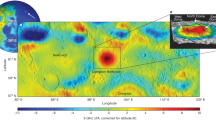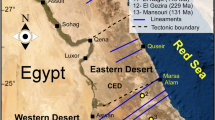Abstract
WHILE recognising the importance of the evidence brought forward by Dr. Lawson in NATURE of Feb. 19, p. 277, I cannot agree that it is sufficient to demonstrate that only an insignificant portion of the energy emitted by radio-active elements in rocks is expended in effecting changes in the surrounding minerals. He states that when such elements are placed in glass tubing, the energy absorbed in producing modifications in the glass does not amount to more than one per cent. of the total given off and is probably not more than about a tenth of this value. He infers that a similar state of things must prevail where biotite mica instead of glass is exposed to the radio-activity, and this in spite of the fact that on heating the pleochroic spheres (usually referred to as haloes) that result, they “exhibit the phenomenon of thermo-luminescence,” but claims that “the energy so liberated does not produce catastrophic results, and is manifestly small.” The last statement is, to say the least, by no means obvious. The question at issue is simply quantitative, and it therefore seems to be dangerous to argue that because glass tubing containing about 70 per cent. of silica and a certain amount of lime and soda absorbs but a small proportion of the radio-active energy, this will also be the case with biotite containing, say, 38 per cent. of silica with smaller amounts of alumina, iron oxide, potash, and titanium oxide. That the alteration in the biotite caused by the radio-activity is very considerable follows from the fact that, as shown by Dr. Brammell of the Imperial College, the pleochroic spheres persist even when the biotite has been converted by pneumatolytic agencies into a substance practically identical with muscovite. He also found that it was necessary to keep biotite at a dull red heat for about six hours to render the haloes invisible. During that time a very large amount of heat might be released without “catastrophic results.”
This is a preview of subscription content, access via your institution
Access options
Subscribe to this journal
Receive 51 print issues and online access
$199.00 per year
only $3.90 per issue
Buy this article
- Purchase on Springer Link
- Instant access to full article PDF
Prices may be subject to local taxes which are calculated during checkout
Similar content being viewed by others
Rights and permissions
About this article
Cite this article
EVANS, J. Radio-activity and the Heat of the Earth. Nature 119, 424–425 (1927). https://doi.org/10.1038/119424a0
Issue Date:
DOI: https://doi.org/10.1038/119424a0
Comments
By submitting a comment you agree to abide by our Terms and Community Guidelines. If you find something abusive or that does not comply with our terms or guidelines please flag it as inappropriate.



